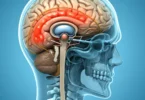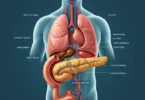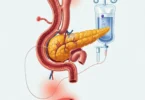A node or a hardening does not automatically mean breast cancer. In most cases, there is an innocent explanation. Many nodes of breast consist of fat or connective tissue. Often also arise under the influence of hormones in the breast lumps that disappear after menstruation
Every woman should palpate their breasts regularly yourself. So she gets a sense of their breast tissue. The self-examination is one of the best methods to detect a breast lump.
In addition, women should from the age of 30 years go atleast once a year to the gynecologist for early diagnosis, so changes can be detected in time.
Risk Checker for Self Examination of Breast Cancer
Read more……..
There are some symptoms that may indicate a tumor. Foe example, in addition to node, discharge from the nipple or retractions of the skin may also indicate tumor. These signs you should clarify by a physician with further investigations, even if the next date for early detection is not yet due:
Palpation :
First, the doctor performs a thorough palpation of both breasts and the lymph nodes of the armpits.
Mammography:
Mammogram is x-ray analysis of the breast. Mammography help us to visible the fine calcifications in the tissue (microcalcifications) , which are a sign of transformation processes in tissues. Microcalcifications can be an indication of a precursor of breast cancer or even part of a malignant tumor. Mammography may also make visible different disorder of breast like node compaction, skin thickening, asymmetry and architectural disorders. Mammography delivers good images when the breast tissue is less dense. But Young women often have a very dense breast tissue, which is why scans are often more meaningful.
Ultrasound:
An additional ultrasound complements the other methods of early detection. Sonography is particularly suitable to distinguish nodes of cysts.
MRI:
Sometimes an MRI of the breasts (MRI, breast MRI) is useful. The method is highly sensitive and can make changes visible that are not detectable with other methods. Breast MRI is not one of the standard methods of diagnosis of breast cancer, also because it is very expensive. Lobular carcinoma can thus often discover better. However, this method have many false-positive results. it may discovered cancer where there is none.
Biopsy:
In order to conform whether the changes are benign or malignant, the examining doctor removes a sample of tissue ( biopsy ).
Possible methods here are:
- Core biopsy: removal of a tissue sample using a hollow needle punch under ultrasound guidance.
- Vacuum biopsy: removal of a tissue sample under image monitoring, for example, X-ray ( “mammography”).
- Fine needle biopsy: removal of individual cells using very thin needles; it is no longer recommended as a standard method.
- Excision: In exceptional cases, a striking change is completely excised through an incision in the skin.
The investigation is carried out under local anesthesia and causes little pain. The tissue samples must be evaluated microscopically by a specialist (pathologist) in tissue and cell studies. If breast cancer is found than treatment is carried out.
Patients with advanced breast cancer and a high risk of metastases (secondary tumors) for example, in the lungs, liver and bones, are examined with other methods. These include studies that provide clues about secondary tumors, for example:
- X-ray examination of the lungs
- nuclear medicine examination of the bone ( bone scan )
- Ultrasound examination of the liver
Tumour markers such as the body’s own substances CEA and CA 15-3 play no role for the diagnosis of breast cancer. They are more suitable for the aftercare.






